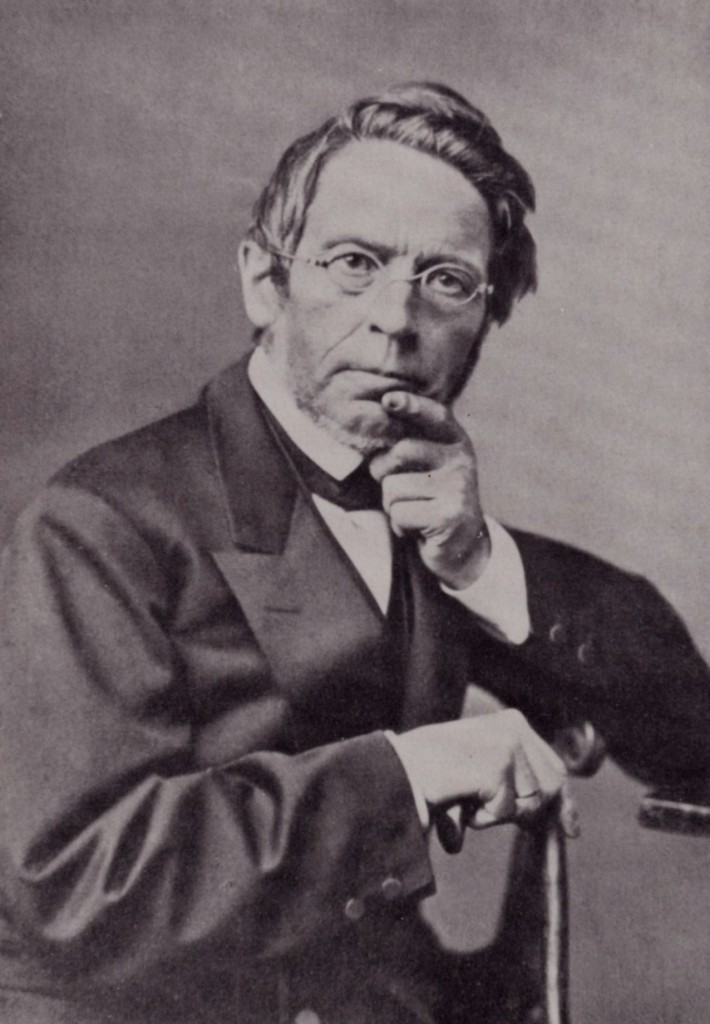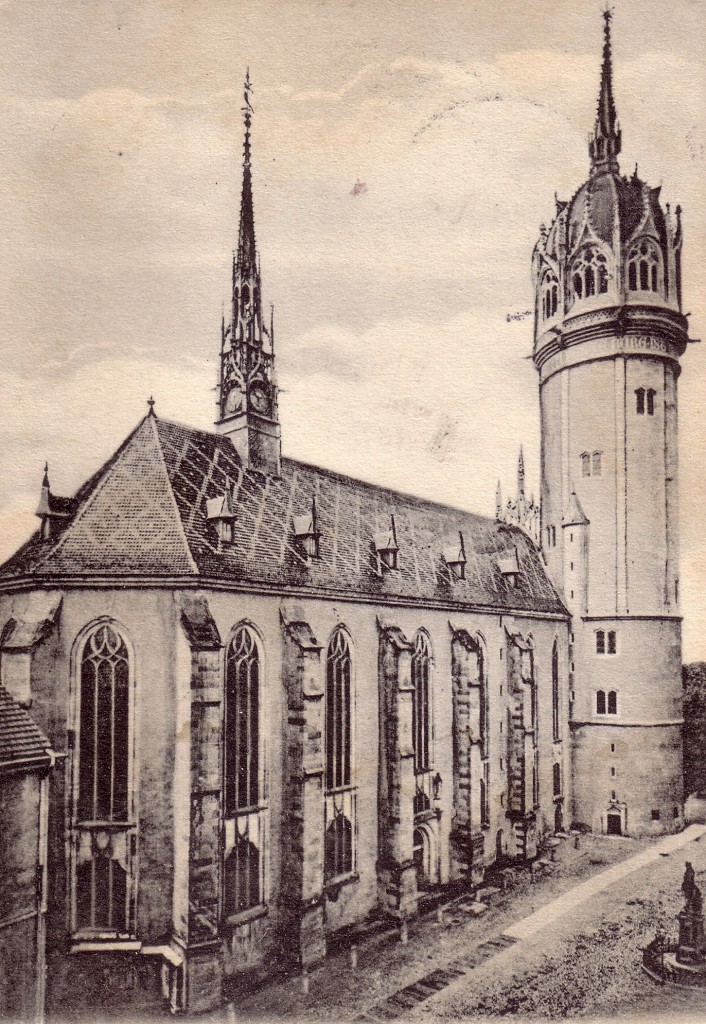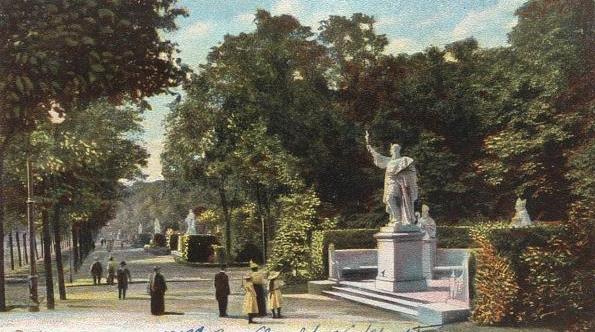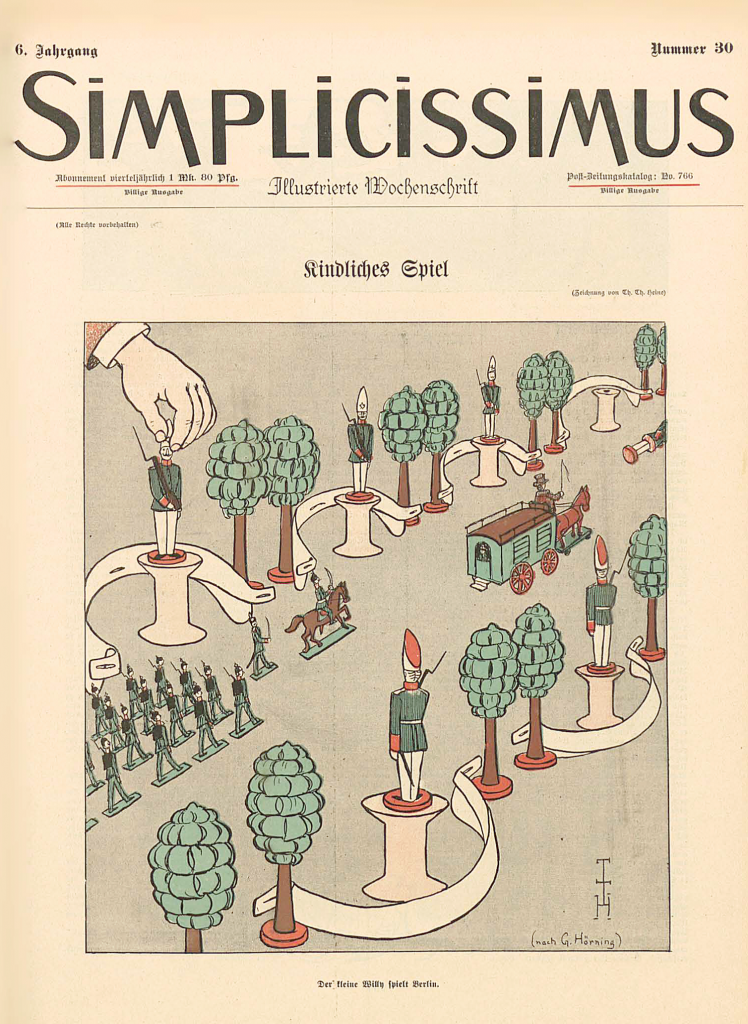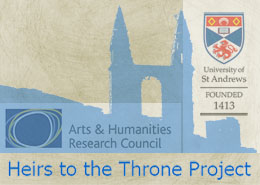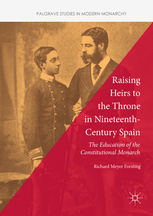Planning a Crypt to teach the Nation:
Crown Prince Friedrich Wilhelm and his Dynastic Politics of Memory
Frank Lorenz Müller
In 1909 Thomas Mann published his satirical novel ‘Royal Highness’ set in the fictional German Grand Duchy of Grimmburg. The story’s eponymous anti-hero, the somewhat melancholy Prince Klaus Heinrich, suffered quietly from that perennial affliction of the minor royal: the boredom that springs from the lack of meaningful occupation. “In his daily life he had nothing to do”, we learn about him; “it was important and decisive whether a greeting or a gracious word had gone well, whether a gesture had appeared winning yet dignified. … Sometimes he thought that it would be good to have a proper surname, to be called Dr Fischer and have a serious profession.” The problem of how to cope with dignified tedium was by no means restricted to Imperial Germany’s fictional princes. Watching the decades crawl past as he was waiting for the throne, Crown Prince Friedrich Wilhelm of Prussia (1831-1888) had to grapple with the same problem. “In order to make people talk about him every now and then,” the socialist weekly Der Sozialdemokrat acidly remarked in 1883, “he has to engage in the silliest nonsense, clearly the result of the deadliest boredom: playing schoolmaster, splashing about with soldiers in the swimming pool and more such things.”

Heinrich von Angeli (1840-1925): Crown Prince Friedrich Wilhelm of Prussia, 1874 (Image: Wikimedia Commons)
As befitted an implacably anti-monarchical publication, Der Sozialdemokrat chose to point to the less serious and, perhaps, less dignified ways in which the crown prince chose to fill some of the many empty hours that came with a role Friedrich Wilhelm himself described as that of an “idle observer”. Some of the projects and pastimes to which the heir to the Prussian and German thrones dedicated his copious spare time were much less frivolous, though, and were rather more sophisticatedly attuned to the political culture of the day than his visits to the local school or the Potsdam public baths. Above all, Friedrich Wilhelm appears to have had a keen sense for the importance of the Politics of Memory (Geschichtspolitik) and an eye for the means of disseminating a suitably patriotic and dynastic version of the past.
A true child of his time, the crown prince shared in the nineteenth century’s infatuation with History and its capacity for teaching valuable lessons to the present generation. He was also a noticeably proud scion of the Hohenzollern dynasty with a keen sense of Prussian superiority. As such he fully endorsed the Borussian interpretation of Prusso-German history advocated by historians such as Johann Gustav Droysen, Heinrich von Sybel or Max Duncker. This ranged from his passionate belief in Prussia’s entitlement to Germany’s ancient imperial crown, to the celebration of a strong, martial state, from a deep reverence for great individual rulers to his consistent emphasis on the Hohenzollerns’ Protestant Christianity. A passionate amateur historian, Crown Prince Friedrich Wilhelm devoted himself to extended periods of study in the archives to collect papers relating to his grandmother, Queen Louise. He arranged funding for a long-term editorial project about the history of Elector Friedrich Wilhelm of Brandenburg (1620-1688) and sought to set up a library comprising a copy of every edition of every book by King Friedrich II (1712-1786).
This high regard for the historical record of his Hohenzollern ancestors and his worry that the Prussian dynasty’s new imperial dignity was not communicated to the people in a sufficiently awe-inspiring manner led the crown prince to take on a great didactic task. In a memorandum he composed in March 1876 he summarised his central objective as follows: “The deeds and governmental acts of our Kurfürsten [=electors] and kings must be presented in concise language, historically true and easily understandable for everyone who passes by.” He dreamed of a prominent dynastic mausoleum-cum-monument in the heart of Berlin. In it – next to the sarcophagi marking the final resting place of his royal ancestors – tablets would be installed “to signify in very few words, yet in a manner that even the least educated classes of the people would find comprehensible and lucid, the activities of those rulers for the welfare of the country and the dignity of the house.”
The crown prince’s plans for this publically accessible Crypt Church – to be erected either next to, or as part of Berlin Cathedral – occupied him for more than a decade. It was designed to enable visitors to time-travel over four centuries right up to the mid-nineteenth century along a dynastic trajectory. Beginning with Elector Friedrich I (1372-1440), the first Hohenzollern ruler in Brandenburg, and in strictly chronological order, a bay would be set aside for every ruling member of the dynasty – even for the ones who were interred elsewhere. No expense should be spared and only precious materials were to be used: marble, granite or terracotta – but no “common sandstone.” As each monumental tomb was to be designed in line with the age in which the ruler lived and the finest works of art from those periods should serve as examples, the crown prince spent years scouring Europe in search of suitable sculptures. He amassed drawings, photographs and notes and eventually made his selection. As late as 1887, just months from his death, he compiled yet another list of sepulchral monuments which could inspire the design of the crypt. By then he had located suitable examples of outstanding works of art in Basel, Bremen, Regensburg, Bologna, Breda, Granada, Zurich, Venice, London, and many other cities.
Even more care was lavished on the tablets that would front each individual bay and tell the story of the Hohenzollerns’ individual and collective greatness in words that everyone could understand. Friedrich Wilhelm pored over these succinct paeans of praise, drafting and re-drafting them and then sent them to a group of friends and eminent historians for feedback. The cream of the Borussian crop of professors were consulted, among them Leopold von Ranke, Heinrich von Sybel, Johann Gustav Droysen, Max Duncker and Hans Delbrück. He found them, on the whole, to be a rather tame audience who did little in the way of criticising their noble colleague and offered, above all, generous helpings of warm words.
Droysen, who responded within less than a week of being sent the first batch of texts, thought these epitaphs “entirely worthy of the monumental position for which they are intended.” Leopold von Ranke got himself tied up in a number of technicalities concerning some dates and suggested a tiny stylistic change for Joachim II’s epitaph, but ended reassuringly by declaring that it made him happy to know Friedrich Wilhelm engaged in “such beautiful work.” Max Duncker was confident that the plan would meet with “the undivided applause and lively joy of the Fatherland.” The archivist and historian Paul Hassel already foresaw a beautifully patriotic scene: “Thousands, from every class (aus allen Schichten des Volkes), that is how I imagine it, will enter the Campo Santo on festive occasions, especially on the memorial days of the kings and queens.”
Buoyed by such praise, Friedrich Wilhelm pressed on and moved along, from elector to elector and from king to king, painting a beautiful picture of a coherent, continuous and cumulative effort by a succession of Hohenzollern rulers. It was to them that Germany owed their modern, martial, well-administered, Protestant nation state. The Borussian core of Friedrich Wilhelm’s version of the past thus ran through this beauty parade of monarchs like through a stick of Brighton Rock: The crown prince began with Elector Friedrich I (1372-1440), who was “highly esteemed in Germany as a hero and statesman”, overcame party strife and restored “public order.” Elector Albrecht (1414-1486) was a “mighty warlord,” whereas Elector Johann (1455-1499) became the “founder of an independent administration.” Elector Joachim II (1505-1571) was not only “inclined toward the gospel according to the teaching of Luther since his youth”, but, as an imperial general, also led troops to protect the German lands against the Turks. Elector Johann Georg (1525-1598) kept strictly to Luther’s teachings and offered a safe haven to those persecuted for their faith, while it was to his son, Joachim Friedrich (1546-1608), that the country owed the foundation of its civil service. Elector Georg Wilhelm (1595-1640) laid the foundations of the Brandenburg army.
The second batch of the crown prince’s sketches began with one of his favourite ancestors: Friedrich Wilhelm, the Great Elector (1620-1688). He was described as a “true hero,” victorious in “memorable campaigns,” responsible for building a “blossoming, viable unitary state, a centre of protestant freedom” and “truly German in his convictions.” The crown prince’s account of King Friedrich Wilhelm I (1688-1740) praised this monarch’s creation of a “strong army, always ready to strike,” his root and branch reform of the civil service, his care for the peasantry (Bauernstand) and his military conquests. There were warm words even for the altogether unimpressive King Friedrich Wilhelm II (1744-1797), whose highly controversial 1788 decree was now celebrated as a “religious law against sectarianism and heresy” designed to protect “proper Protestant teachings (den lauteren evangelischen Lehrbegriff)”. When the crown prince finally got to his own grandfather, King Friedrich Wilhelm III (1770-1840), he was already dying of throat cancer. The text, praised by Hans Delbrück, depicted the king as the author of the reforms of Prussia’s army, administration and social order at the beginning of the century and ascribed the foundation of the Zollverein in 1830 to Friedrich Wilhelm III’s desire for a “firm connection of the German tribes (Stämme).”
Eagle-eyed aficionados of Prussian history will have noticed a glaring gap in this royal list: King Friedrich II (1712-1786) – the “Great”. In the case of this über-ancestor, Friedrich Wilhelm was simply overcome with awe and – after numerous fruitless attempts to capture the greatness of this monarch in a few words – eventually settled for an epitaph of, as he saw it, majestic brevity: “King Friedrich II—called ‘the Great’ by contemporaries and posterity.”
By the mid-1880s, the crown prince had also settled on a plan for housing his grand narrative in an appropriately grand building. The replacement for Berlin’s cathedral, as designed by the architect Julius Raschdorff in consultation with Friedrich Wilhelm, would have inscribed the crown prince’s monarchical politics of memory brashly onto the cityscape of the German capital. Entitled “A Concept by His Majesty the Emperor and King for the Construction of the Cathedral and the Completion of the Royal Palace in Berlin” Raschdorff’s drawings document how the new building was to communicate a political message: the unity of the Reich was embodied in the person of the emperor and indissolubly linked to the Prussian dynasty. Under its three domes the new cathedral was to house three separate spaces: the sepulchral or crypt church (Grabkirche) with its array of Hohenzollern tombs, a central ceremonial church (Festkirche) and the preaching church (Predigtkirche) to be used by the cathedral parish. Both the cathedral and the adjacent royal palace were to be dwarfed by a gigantic new campanile, while a large equestrian statue of Emperor William was to be placed in front of the central arch. Within three weeks of his father’s death, the crown prince, now Emperor Friedrich III, ordered that the question of a re-building of Berlin cathedral “be addressed immediately.”
Friedrich III did not live to see work start on this monumental new building. His son, Emperor Wilhelm II, honoured his father’s wishes, though, and oversaw the construction of the considerably smaller – yet still massive – Berliner Dom which dominates the Lustgarten to this very day. Crown Prince Friedrich Wilhelm’s plans for a Crypt Church and a new cathedral in Berlin were not his only forays into the field of using architecture to communicate a dynastic message, though. In 1885 work commenced to restore the famous Castle Church (Schlosskirche) in Wittenberg, where Luther had nailed his 95 theses to the door in 1517 – thus marking the dramatic beginning of the German Reformation. Ever since he had found this famous building in a state of disrepair in the early 1880s, Friedrich Wilhelm had pushed for money to be made available not only to restore the church, but to turn it into a shrine celebrating the Hohenzollerns’ role as Germany’s leading Protestant dynasty. With the Prussian eagle serving as the weather vane and the statues of 16th-century Hohenzollern princes adorning the interior of the renovated Castle Church, the famous building was transformed into a classic example of architecture parlante, talking – not so subtly – about the greatness of the Prussian dynasty.
When he solemnly opened the restored building in 1892, Emperor Wilhelm II used the occasion to stage the Hohenzollerns’ pre-eminence to the full. And while he did not realise his father’s plans for a patriotic crypt, Wilhelm II adapted the patriotic idea at its core in his own inimitable way. In a special edition of the official Reichsanzeiger issued on 27th January 1895 – his 36th birthday – the emperor announced his intention to “commemorate the glorious past of our fatherland”. Wilhelm would therefore pay to have “marble statues of the princes of Brandenburg and Prussia – beginning with Albrecht the Bear and ending with the Kaiser and King Wilhelm I … erected in sequential order along the Siegesallee.”
A mere six years later the Siegesallee project was finished. The street that ran from the Kemperplatz to the Victory Column outside the Reichstag building – right through Berlin’s popular Tiergarten Park – was lined with 32 sculptural ensembles. The statues were hewn from gleaming white Carrara marble and depicted each ruler in his prime. Meticulous care had been taken to ensure that every last uniform button was historically accurate. Soon an official guidebook was at hand to reinforce the monarchical message. Sanctioned by the Prussian Ministry of Education, the slim volume was sold by veterans for a mere 50 Pfennige. For all its lack of subtlety the Kaiser’s marble marketing effort appears to have worked: soon schools organized outings to the Siegesallee; families enjoyed patriotic stories while strolling along the sculptures; and on holidays representatives of military or religious organizations would lay wreaths at the feet of individual statues.
There were, of course, catcalls from within the artistic community as to the merit of these statues and the Berliners’ proverbial penchant for irreverence quickly turned the dreary file of monarchs into Die Puppen (The Dolls). The Munich-based satirical journal Simplicissimus commented on the patriotic thoroughfare with a wry cartoon: It showed commonplace household items and toy soldiers neatly arranged to resemble the row of royal worthies. The withering caption, evoking the idle games of a bored boy, read “Childlike Games. Little Willy plays Berlin” – thus suggesting that the problem of exalted boredom may not have been restricted to those waiting for a throne, but could also afflict those already occupying one. In both cases – with Crown Prince Friedrich Wilhelm planning such ventures and Kaiser Wilhelm II delivering them – it seems, though, that the arts of exercising soft power to cajole, persuade, bamboozle or persuade the audience constituted the kind of skill late-modern monarchs found hard to ignore.
For a fuller discussion of the issues addressed in this essay (as well as bibliographical and archival references), please consult: Frank Lorenz Müller: “The Prince, the Crypt, and the Historians: Emperor Friedrich III and the Continuity of Monarchical Geschichtspolitik in Imperial Germany”, German Studies Review 35, 3 (2012), 521 – 540
I am grateful to Dr Hans Zimmermann (of Herzogin Anna Amalia Bibliothek Weimar, Projekt www.simplicissimus.info) for his kind permission to use the image “Kindliches Spiel” (Simplicissimus, Jhg. 6, Heft 30, 15 Oct. 1901).

